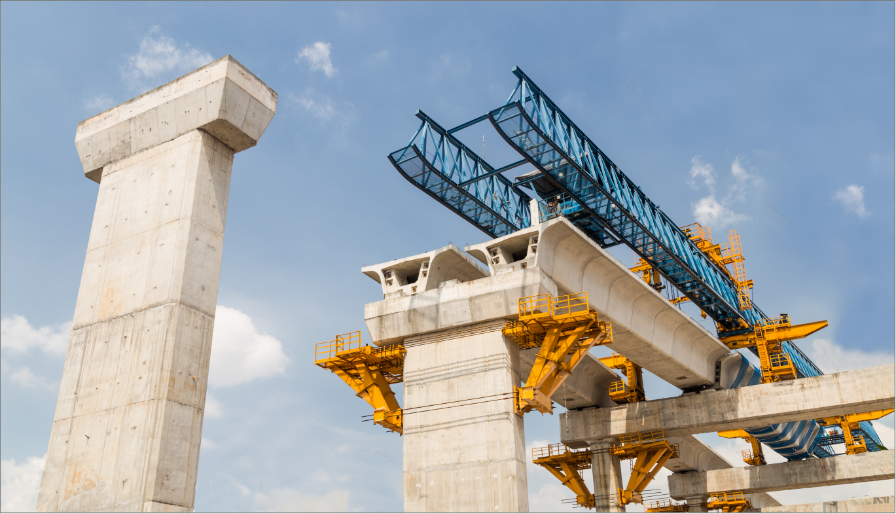About PPPs

What is a PPP?
Public-Private Partnerships (PPP) are long-term contracts entered into between one or more public entities and the private sector to create, develop, improve and/or maintain public infrastructure for the provision of public services. Under this contractual link, objectives and risks are shared, and standards are established for service levels that must be met by the PPP Contractor and are linked to the remuneration of the latter, which is totally or partially in charge of financing the construction, exploitation, operation, and maintenance of the public asset according to the duration of the PPP contract.


This public procurement modality, which emerged in the United Kingdom in the early 1990s as a tool to renew public assets after a long period of low investment in infrastructure and to promote best practices, was created in Panama through Law No. 93 of September 19, 2019, “as an incentive for investment, social development and job creation”.
Panama’s PPP Regime regulatory framework was based on the best international practices, and on the results and lessons learned from the application of a decade of PPP regulations in Latin America.


Why a PPP Regime in Panama?
The PPP Regime allows the Government of the Republic of Panama to promote the development of infrastructure projects and services in strategic areas for the country (energy, transportation and logistics, telecommunications, social development, urban development, among others), for the benefit of the State and its inhabitants, and under conditions that meet the basic expectations of the different key players in these processes, such as the State and its citizens, private developers, financiers, and the users or beneficiaries of such infrastructure and services.

How does it work?
PPP projects arise from public initiatives submitted by the Contracting Public Entities (PCEs) –ministries, decentralized institutions, public enterprises or municipalities– for consideration by the Governing Body. These initiatives must be part of the State’s Five-Year Investment Plan and contemplate an investment of more than B/. 15 million. Another mechanism to consider an initiative as a potential PPP project is that it be included in a list prepared by the Cabinet Council, subject to compliance with Law No. 93 of September 19, 2019.
Once the CPE has identified a public initiative with the potential to be implemented under the PPP modality, it must comply with the eligibility criteria in the Prefeasibility and Feasibility phases. In these phases of the PPP Process, the CPEs prepare and structure technical reports, in coordination with the SNAPP, which the EPC will subsequently submit for consideration by the Governing Body.

Enter here to learn more about the projects elegibility criteria,
established in Article 27 of Law No. 93, 2019.


After ensuring that the public initiatives meet the technical requirements in the first two phases of the PPP Process (1: Prefeasibility and 2: Feasibility), in which the Ministry of Economy and Finance verifies, in coordination with the SNAPP, that they comply with the fiscal and budgetary limits, they move on to phases 3: Bidding and 4: Execution, if they have the pertinent approvals from the Governing Body.
It is important to note that PPP projects require time and resources for their preparation. The success of a PPP project lies largely in its adequate structuring, which will require a significant investment in studies and time for maturity. The experience of other countries in the region, such as Peru, Colombia and Chile, shows that a PPP project can take between six months and a year to prepare, depending on the sector and complexity. This process could take up to three years, depending on the complexity of the project.
Main Advantages & Benefits of PPP Contracts

Structuring of the project aimed at encouraging the PPP Contractor to comply with the deadlines to start the service, thus avoiding cost overruns due to longer permanence..

The goal is to provide quality services to users, with measurement criteria based on indicators to measure the PPP Contractor’s performance.

Remuneration is conditioned to infrastructure availability, service levels and quality standards at each stage of the PPP project.

The PPP Contractor executes the work with the goal of recovering the invested capital. Therefore, it will have the interest of not delaying its construction and entry into operation.

The PPP Contractor is responsible for maintaining the project in optimal condition and operation, resulting in the execution of quality works, ensuring the maintenance of these during the term of the contract and guaranteeing that the public purpose of providing the services is fulfilled.

Each risk is assigned to whoever can best manage it, either to the Contracting Public Entity and/or the PPP Contractor, unlike other traditional contracting alternatives. This risk allocation translates into benefits for the State in the development and execution of infrastructure, as well as public service in the country.
Cuadro comparativo
Dado que existen diferentes tipos de contratos, donde los actores privados y públicos trabajan conjuntamente, presentamos un comparativo (indicativo) para señalar algunas diferencias entre los contratos de APP (establecidos en la Ley 93 de 2019) y las contrataciones públicas tradicionales:
Disposiciones contractuales
Contrataciones bajo modalidad APP
Contrataciones públicas tradicionales
Marco legal
Ley 93 de 19 de septiembre de 2019 y el Decreto Ejecutivo 840 de 31 de diciembre de 2020, que reglamenta la Ley 93 de 19 de septiembre de 2019.
CONTRATACIÓN APP
Texto Único de la Ley 22 de 27 de junio de 2006, ordenado por la Ley 153 de 2020 y Decreto Ejecutivo 439 de 10 de septiembre de 2020, que reglamenta la Ley 22 de 2006.
CONTRATACIÓN TRADICIONAL
Tipos de procedimiento de selección de contratista para obras de infraestructura, bienes y servicios.
Licitación. Contratos con monto de + B/. 15,000,000.00. Se evalúa la propuesta en dos etapas, cumplimiento de los requisitos técnicos y en la segunda etapa se abren las propuestas económicas que hayan cumplido con los requisitos técnicos.
CONTRATACIÓN APP
Por norma general se aplican dos tipos de procedimiento: Licitación por mejor valor (LMV), contratos con monto de + B/. 500,000.00. Se ponderarán los aspectos solicitados en el pliego de cargos en una sola etapa. Licitación pública (LP). Contratos con monto de + B/. 500 000.00. El precio es el factor determinante, siempre que se cumpla con todos los requisitos y aspectos técnicos exigidos.
CONTRATACIÓN TRADICIONAL
Adjudicación
Se adjudicará al proponente que haya cumplido con los requisitos técnicos y presente la oferta económica más beneficiosa.
CONTRATACIÓN APP
En la LMV se adjudica al proponente que obtenga el mayor puntaje de acuerdo con la metodología de ponderación, siempre que este cumpla con los requisitos exigidos.
En la LP se adjudica al proponente que cumpla con los requisitos exigidos y tenga el precio más bajo.
CONTRATACIÓN TRADICIONAL
Reclamos
Admiten reclamos ante la Dirección General de Contrataciones Públicas e impugnación en el Tribunal Administrativo de Contrataciones Públicas.
CONTRATACIÓN APP
CONTRATACIÓN TRADICIONAL
Contratos
Ambos son contratos públicos, suscritos entre una Entidad del Estado y un Particular, y refrendados por la Contraloría General, del cual surgen derechos y obligaciones para ambas partes y cuya finalidad es de carácter público.
CONTRATACIÓN APP
CONTRATACIÓN TRADICIONAL
Objetivos
Su objeto es la provisión de bienes públicos (infraestructura) y de sus servicios relacionados.
CONTRATACIÓN APP
CONTRATACIÓN TRADICIONAL
Iniciativas
Ambas deben nacer por iniciativa del Sector Público.
CONTRATACIÓN APP
CONTRATACIÓN TRADICIONAL
Recursos
Se manejan a través de la figura del fideicomiso.
CONTRATACIÓN APP
Usualmente los administra el contratista, mediante el pago por avance de obra o financiamiento interino.
CONTRATACIÓN TRADICIONAL
Financiamiento
La Entidad no requiere disponibilidad presupuestal, en el entendido que es el privado quien realiza el proyecto y recupera el coste mediante los pagos que efectúan los usuarios del mismo (autofinanciado). Excepto en los casos de proyectos cofinanciados en donde el Estado aporta.
CONTRATACIÓN APP
La Entidad paga la contraprestación del contratista a través de su presupuesto.
CONTRATACIÓN TRADICIONAL
Plazos
Relación contractual a largo plazo, con un máximo de 30 años prorrogables por un plazo adicional máximo de 10 años adicionales.
CONTRATACIÓN APP
La duración se limita al periodo de construcción de la obra y/o prestación del servicio.
CONTRATACIÓN TRADICIONAL
Fiscalización
En ambos casos los contratos son fiscalizados por la Contraloría General de la República.
CONTRATACIÓN APP
CONTRATACIÓN TRADICIONAL
Enfoque
Enfoque de resultados y como objetivo central el brindar y mantener, en el largo plazo, un servicio de calidad a favor de los usuarios.
CONTRATACIÓN APP
Enfoque orientado a cumplir las especificaciones técnicas.
CONTRATACIÓN TRADICIONAL
Reparto de riesgos
Una parte sustancial del riesgo es transferido al sector privado.
CONTRATACIÓN APP
El Estado comparte riesgos con el privado.
CONTRATACIÓN TRADICIONAL
Comparative Chart
Given that there are different types of contracts where private and public actors work together, we present a comparative (indicative) to point out some differences between PPP contracts (established in Law No. 93 of 2019) and traditional public procurements::
Contractual
Provisions
Contracting under
the PPP modality
Traditional Public
Procurement
Legal Basis
Law No. 93 of September 19, 2019, and Executive Decree No. 840 of December 31, 2020, which regulates Law 93 of September 19, 2019, modified by Executive Decree No. 119 of April 27, 2023.
Sole Text of Law No. 22 of June 27, 2006, ordered by Law No. 153, 2020, and Executive Decree No. 439 of September 10, 2020, which regulates Law No. 22, 2006.
Types of contractor selection procedures for infrastructure works, goods, and services
Bidding
Contracts with an amount of + B/. 15,000,000.00. The proposal is evaluated in two stages, compliance with the technical requirements and in the second stage the economic proposals that have complied with the technical requirements are opened.
As a rule, two types of procedures are applied:
Best Value Bidding
(BVB)
Contracts with an amount of + B/. 500,000.00. The aspects requested in the RFP will be weighted in a single stage.
Public Bidding (PB)
Contracts with an amount of + B/. 500,000.00. The price is the determining factor, provided that all requirements and technical aspects are met.
Award
The award will be made to the bidder that has complied with the technical requirements and submits the most beneficial economic offer.
In the BVB, the award will be made to the bidder that obtains the highest score according to the weighting methodology, provided that it complies with the requirements.
In the PB, the award is made to the bidder that complies with the requirements and has the lowest price.
Claims
Admit claims before the General Directorate of Public Contracting and challenges before the Administrative Tribunal of Public Contracting.
Contracts
Both are public contracts, entered into between a State Entity and a Private Party, and endorsed by the Comptroller General’s Office, from which rights and obligations arise for both parties and whose purpose is of a public nature.
Purpose
Its purpose is the provision of public goods (infrastructure) and related services.
Initiatives
Both must be created by the Public Sector.
Resources
Managed through trusts.
Usually managed by the contractor, by means of progress payments or interim financing.
Financing
The Contracting Entity does not require budgetary availability, on the understanding that it is the private party that carries out the project and recovers the cost through the payments made by the project users (self-financed). Except in the case of co-financed projects where the State contributes.
The Contracting Entity pays the contractor’s consideration through its budget.
Terms
Long-term contractual relationship, with a maximum of 30 years, extendable for an additional maximum term of 10 years.
The term is limited to the period of construction of the work and/or provision of the service.
Audit
In both cases the contracts are audited by the Comptroller General of the Republic.
Focus
Focus on results and as a central objective to provide and maintain, in the long term, a quality service in favor of the users.
Focus on complying with technical specifications.
Risk Sharing
A substantial part of the risk is transferred to the private sector.
The State shares risks with the private sector.
Legal Framework
The PPP Regime was created in Panama by Law No. 93 of September 19, 2019, regulated by Executive Decree No. 840 of December 31, 2020, amended by Executive Decree No. 119 of April 27, 2023.
• Law No. 93 of September 19, 2019, which creates the Public-Private Partnership Regime.
• Executive Decree No. 840 of December 31, 2020, which regulates Law No. 93 of 2019.
• Executive Decree No. 119 of April 27, 2023, which amends Executive Decree No. 840 of 2020.
• Law No. 22 of June 27, 2006, which regulates Public Procurement, ordered by Law No. 153 of 2020.
• Executive Decree No. 439 of September 10, 2020, which regulates Law No. 22 of 2006.
• Executive Decree No. 58 of June 26, 2025, which modifies an article of Executive Decree No. 840 of December 31, 2020.
